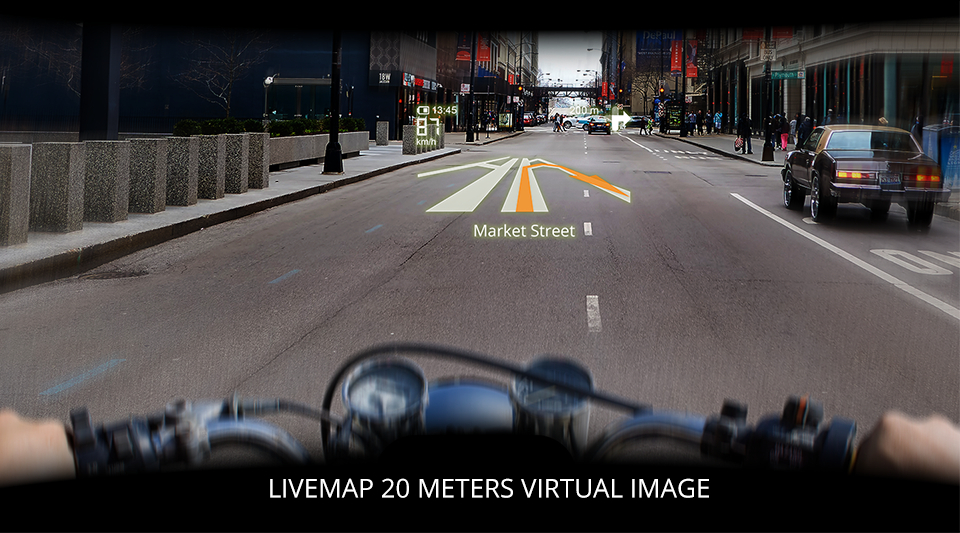As we all know, the most exciting things in life often come with risks. This is especially the case when it comes to extreme sports, like bungee jumping and skydiving, but also for things that you can do on a more daily basis, like riding a motorbike. Statistically, there is a 6% of experiencing a bike accident each time you ride out, which is considerably high compared to the risk of a car accident (1%). The fact that 13% of road fatalities are caused by motorcycles, despite the fact that only 3% of registered vehicles are motorcycles, also adds to the claim that riding a motorbike is dangerous. However, riders wearing an approved helmet reduce the risk of death by 37 percent!
Wearing a helmet is certainly a smart choice, but whereas the helmet used to be really simple in the past, the helmets themselves are now also becoming ‘smart’. One of the first smart motorcycle helmets, the Skully AR-1, took a huge leap in combining a normal helmet with smart functions, like streaming music, handsfree calling, a rear view camera and GPS navigation on a heads-up display. Unfortunately, this Indiegogo project failed and the firm filed for bankruptcy. But, Skully did raise the bar for smart helmets. Other companies have come up with even more elaborate designs, e.g. Crosshelmet, which includes all of the above mentioned functions, but also noise control, group talk and a safety light are included. Crosshelmet also shows relevant journey information, like weather, temperature, and compass direction. LiveMap adds to that by using AR-technology, where the image is projected on your visor instead of on small heads-up displays, and comes with a camera so you can exactly see what happened in case of an incident. FUSAR helmets even add to that, integrating crash detection features and a black box recorder, but also emergency alert systems, which will notify nearby help centers and your emergency contacts if you are involved in a crash. After all of this, what more is there to add?
Well, the last feature combines technology with the ‘human’ side. Since motorcycling is dangerous, you would expect bikers to have insurance, right? Wrong! Especially in developing countries, where mopeds and motorbikes are used a lot, insurance is very expensive! That is why Jarvish is building helmets which they think will ‘transform the global insurance industry’. This company installs sensors inside motorcycle helmets to measure rider behavior. These sensors can track speed, how hard the rider brakes, how tight they turn corners, when and where they travel, as well as external factors such as traffic conditions. By tracking this behavior, risk calculations can be made and insurances can be priced based on riding behavior. This will not only make insurances accessible to more people, but hopefully people will also adjust their behavior, leading to safer driving. This way, not only the driver will be safer because (s)he is wearing the helmet, but the ride itself will also be safer. What do you think, will this pricing strategy work?
Sources:
https://en.wikipedia.org/wiki/Motorcycle_safety#Consequences_of_accidents
https://www.indiegogo.com/projects/skully-ar-1-the-world-s-smartest-motorcycle-helmet#/
https://www.kickstarter.com/projects/491835187/crosshelmet-the-smart-motorcycle-helmet
https://livemap.info/
https://badasshelmetstore.com/5-smart-motorcycle-helmets-keep-alive-road-2017/
https://www.forbes.com/sites/pamelaambler/2017/08/01/smart-helmets-are-the-new-frontier-of-insurtech-gadget-saving-your-wallet/#132309875f9c


